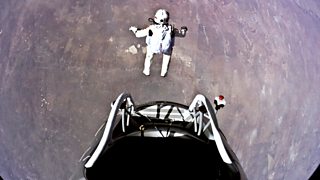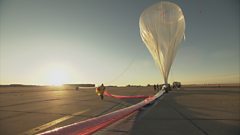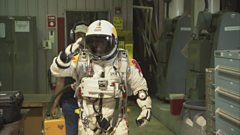
The Science of Space Dive (pt 4/6) - The dangers of altitude
In his ascent to 125,000ft Felix Baumgartner risked several life-threatening conditions.
As Felix Baumgartner made his ascent to 125,000ft he risked several life-threatening conditions. The atmosphere at the edge of space is so inhospitable it would be impossible for any human to survive unaided. As he travelled upwards, the oxygen in the upper atmosphere became increasingly sparse and he risked a condition known as hypoxia. His body would have not been able to supply his tissues with enough oxygen and he would have quickly lapsed into unconsciousness.
Pressure also decreases at extreme altitude and without specialist equipment Felix could have suffered two other lethal conditions. As the pressure fell, the nitrogen trapped in solution in his body would bubble out, leading to decompression sickness; a condition more commonly known as the bends. However, at 63,000ft, Felix passed through the Armstrong line, a deadly threshold where all the gasses trapped in the body begin to escape. Without protection Felix would have suffered an ebullism as all the fluid in his body boiled.
Duration:
This clip is from
More clips from The Science of Space Dive - Learning Zone
-
![]()
The Science of Space Dive (pt 1/6) - The world's biggest skydive
Duration: 03:53
-
![]()
The Science of Space Dive (pt 2/6) - The balloon
Duration: 03:59
-
![]()
The Science of Space Dive (pt 5/6) - The physics of free-fall
Duration: 04:49





